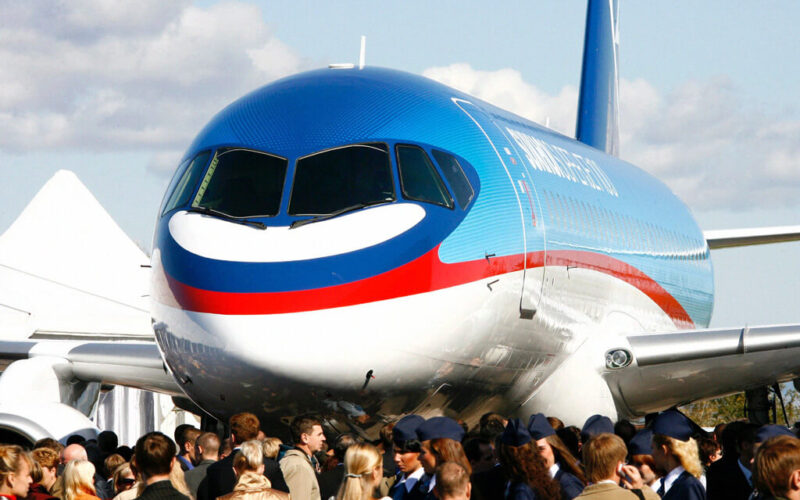The Superjet-100, initially manufactured by Sukhoi, was designed to compete with Brazilian Embraer and Canadian Bombardier in the regional aircraft market. To encourage acquisitions, subsidies were offered by the Russian government. Eight years after it entered service, it has been at the center of numerous controversies.
Back in 2010, a year before the then-Sukhoi Superjet-100 was delivered to its launch customer Aeroflot, an investigation at the Komsomolsk aircraft manufacturing plant owned by Sukhoi where, among others, the airliner was assembled revealed that at least seventy employees had used fake higher education diplomas.
On May 9, 2012, the newly-launched aircraft crashed during a demonstration tour. All 37 passengers and 8 crew on board were killed. The accident was attributed to human mistake, as the flight crew apparently disregarded the plane’s terrain warning system and did not follow sterile cockpit procedures.
Throughout its years of service, the plane has been deemed as unreliable by several of its operators, which have either reduced or canceled their orders. Many of them complained of the difficulty to acquire spare parts from the constructor, hindering the availability of the aircraft.
As early as February 2014, the Interstate Aviation Committee, the civil aviation authority of the Commonwealth of Independent States, voiced its concern regarding an abnormal number of incidents involving the aircraft.
In September 2018, Aeroflot placed a record order for 100 aircraft. Yet a month later, in October and November 2018, one of the biggest clients of the plane, State Transport Leasing Company (STLC), filed two consecutive claims for a total of $7.7 million, as Sukhoi Civil Aircraft (SCAS) fell short to complete an order of around 30 SSJ-100 aircraft.
The engine powering the aircraft, the SaM146 manufactured by a Franco-Russian joint venture Powerjet shows early wear after 2,000-4,000 flight hours, despite manufacturers’ claims that the engine is designed to work for 7,500-8,000 hours, said sources close to the matter to Russian media Vedomosti, in November 2018.
In November 2018, Brussels Airlines announced that the recurring problems affecting their four Sukhoi Superjet 1000 aircraft would force the company not to renew their lease, opting for leased Bombardier CRJ-900s instead.
This led to the transfer of the program from Sukhoi to another of the United Aircraft Building Corporation (UAC), Irkut, in late November 2018.
But this was not enough to win back the trust of customers. In April 2019, the Slovenian national carrier, Adria Airways canceled its deal to lease 15 SSJ100s, blaming a “ lack of common vision of further strategic development” from the manufacturer.

